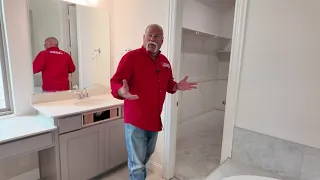Cast iron drain lines, common in homes over 40 or 50 years old, can last for decades when maintained well. However, after years of accumulating rust scale, mineral deposits, and everyday waste, the interior walls become rough and prone to repeated clogs. Using specialized tools, such as carbide-tipped chain knockers and wire brushes, professionals can often scrape off layers of buildup, allowing your old drain lines to flow like new. This blog explains the essential steps, the gear required, and when (and why) you might want to invest in a thorough cast iron cleaning.
Why Cast Iron Pipes Eventually Need Cleaning
Many older homes rely on cast iron drain piping. When new, cast iron has relatively smooth walls. Over time, that interior wall corrodes slightly, collecting food scraps, soap residue, grease, hair, and other debris. As rust or scale builds up, the effective diameter shrinks. This leads to slow drains or frequent clogs that just keep coming back even after you snake or hydro-jet. Owners who face repeated backups may find that standard drain cleaning only removes soft obstructions without fully addressing the underlying roughness. That’s where mechanical descaling tools come in.
Daily usage of your drain lines means each flush or rinse can deposit more residue, especially in a pipe with uneven interior surfaces. In severe cases, layers of rust can even delaminate, turning into large flakes that catch additional debris. If the pipe is still structurally sound (meaning no major cracks or holes), it might be a candidate for cleaning. Instead of replacing an entire run of cast iron piping (involving possible demolition of floors, walls, or foundation slabs), you can often ream out and restore its interior condition.
Tools to “Clean Out” Old Cast Iron
- Carbide-Tipped Chain Knockers. This specialized chain attaches to a flexible cable that spins at high speed. The chain can expand outward, scraping the rust and scale from the pipe walls. Some chain knockers have small carbide beads or tips that grind away hardened buildup.
- Wire Brush Attachments. After using the chain knocker, a wire brush can polish the pipe interior, removing finer debris. This multi-step approach leaves a smoother finish than chain knocks alone.
- Rigid Flex Shaft or Similar System. These advanced drain-cleaning systems let you power the spinning attachment while simultaneously running a camera. You can see in real time how much scale you’re removing.
- Camera Inspection. Before and after camera inspections are crucial to confirm the pipe’s condition. You’ll see how thick the deposits are initially, and how well you’ve cleared them at the end.
- Protective Gear. Always wear gloves, eyewear, and possibly a respirator. Once the scale or rust dust becomes airborne, it can be harmful if inhaled. Additionally, any time you handle sewer lines, you’re exposed to bacteria and viruses.
Step-by-Step Descaling Process
-
Initial Camera Inspection
A small sewer camera is fed through the line to see how obstructed or rusted the cast iron is. You might discover thick layers of scale or slime, as well as lumps of “fecal dust” or old debris that’s dried and stuck to the sides. -
Carbide Chain Knocker Pass
Start with the more aggressive tool: the carbide-tipped chain. Attach it to the cable inside a flex shaft or a similar machine. Feed it into the pipe. Once it’s in the right section, spin it carefully at a controlled speed. The chain expands outward under centrifugal force, chipping away rust and hardened sludge. Go slowly at first to avoid damaging the pipe if it’s fragile.
• Keep an eye on your camera feed to see how the chain is hitting the walls.
• Move methodically from the entry point toward the end of the run, then pull back, repeating if necessary. -
Wire Brush Pass
After removing the big chunks, switch to the wire brush attachment. This polishes the surface, removing leftover bits and smoothing out any ridges. This step also helps remove smaller rust flakes the chain may have loosened. The pipe interior should appear noticeably clearer on camera. -
Flush Out Debris
The chains and brushes dislodge large amounts of rust dust, hair, and grease. To get it all out, a plumber might run water through the line or do a light hydro-jet. Sometimes they vacuum the line if they can isolate it. All that debris needs a path out. This final flush is crucial—leaving loose rust and debris in the line can re-clog the system.
• If the pipe is under a slab, the exit is typically the main sewer connection leading out to the city line or septic.
• If it’s a vertical stack, you might remove the debris through a cleanout in the basement or utility area. -
Follow-Up Camera Inspection
The plumber then re-inserts the camera to confirm how smooth the pipe walls are. At times, you can see near-black iron surfaces, minus the lumps of scale. If certain areas remain stubborn, an extra pass with the chain or brush might be done. Typically, you’ll find that a single thorough pass is enough, but highly corroded lines may take more work.
Comparing Cleaning to Other Methods
• Standard Drain Snaking. A regular auger or snake only bores a hole through a clog. It doesn’t remove rust scale on the walls. So if your problem is repeated partial blockages, standard snaking can’t fix that.
• Hydro-Jetting. Water jets blast away grease and some scale, but extremely dense rust or mineral deposits might still cling to the cast iron. The chain knocker is more aggressive on hardened deposits. That said, hydro-jetting can be a great finishing tool after mechanical descaling.
• Pipe Lining or Replacement. If your pipe is severely cracked or the iron is so thin it threatens collapse, cleaning alone won’t fix structural problems. You might need to line or replace the pipe. However, if the pipe is otherwise intact, removing the scale can extend its life for years or decades before more drastic measures.
Is Descaling Right for Your Home?
If you’re experiencing frequent clogs, foul odors, or have an older home with cast iron drains, consider a camera inspection. If the footage reveals thick rust flakes or calcium buildup, mechanical cleaning might save you from bigger repairs. Nonetheless, you have to weigh the cost. A professional service that includes specialized chain knocking can be more expensive than a routine snake call. Still, it’s cheaper than a full pipe replacement and far less invasive than demolishing floors or walls.
What About Damaging the Pipe Further?
A legitimate concern is whether these aggressive tools chip away so much material they weaken the remaining pipe. A well-trained plumber monitors the camera and ensures the chain’s speed is suitable for the pipe’s diameter and condition. Most robust cast iron lines can handle the force if they’re not already cracked or severely thin. If major structural defects exist, you’ll see them on camera. No amount of descaling solves a structural hole. Instead, you’d need patching, lining, or replacement.
Safety and Cleanup
This process produces clouds of fine rust dust (sometimes humorously called “fecal dust” if it includes old sewage residue). It can become airborne when you remove the cable or open the system. Protect nearby surfaces, and wear masks and gloves. The final cleanup might involve wiping down surfaces, vacuuming the area, and disinfecting if sewage was involved.
DIY or Professional
Because of specialized equipment—flex shafts, cameras, chain knockers—this usually isn’t a DIY job. You might rent some gear, but the skill level to avoid pipe damage or tangling cables can be high. Also, retrieving broken or stuck tools from underground lines is no fun. If a piece of the cable or chain detaches, you can end up with a brand-new clog. Hiring a plumber who already has the training and has done multiple cast iron cleanings is typically more practical.
Long-Term Pipe Maintenance
After you descale cast iron pipes, try to minimize future buildup:
• Avoid dumping grease, large food scraps, or coffee grounds down the sink.
• Use strainers to catch hair in showers.
• Run hot water for a few seconds after draining greasy or fatty liquids.
• Get periodic camera inspections if your system is known for frequent clogs.
By using a carbide-tipped chain knocker and wire brush, you can strip away years of accumulated gunk, effectively restoring the pipe’s interior diameter without going to the expense of a full replacement. If your home features cast iron that repeatedly clogs or has tough rust scale, consider a plumber with the right tools to remove the buildup. Just ensure the pipe is structurally sound first. The end result: a smoother, freer-flowing drain—and hopefully an end to the inconvenience of recurring backups.




